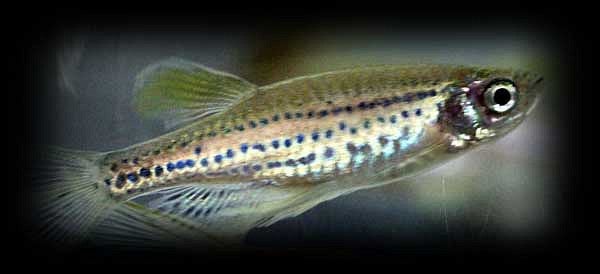The Future Starts Now
The Future Starts Now
The Future Starts Now
Thanks to an extraordinary $500 million lead gift, the University of Oregon is proud to announce the Phil and Penny Knight Campus for Accelerating Scientific Impact. This game-changing initiative is specifically designed to fast-track scientific discoveries and the process of turning those discoveries into innovations that improve the quality of life for people in Oregon, the nation and beyond. The Knight Campus will reshape the higher education landscape in Oregon by training the next generations of scientists, forging tighter ties with industry and entrepreneurs and creating new educational opportunities for graduate and undergraduate students.
This ambitious effort to rethink research, science education and innovation at the UO is being realized thanks to the generosity of Penny and Phil Knight, BBA ’59.
Phil Knight earned his business degree at the UO while running track under the legendary Bill Bowerman. They would go on to cofound Nike, the world’s leading designer, marketer and distributor of athletic footwear, apparel and equipment.
Over the years, Penny and Phil Knight have transformed the lives of UO students as well as faculty, staff and community members through generous philanthropic support that spans athletics and academics. Their latest gift invests in Oregon’s greatest strengths: deep skill and talent in discovery-based science and a 50-year history of breakthroughs stemming from collaborative, interdisciplinary research.
“In an age of declining public support for scientific research generally and declining public higher education support specifically, Penny and I are delighted to contribute to these critically important areas,” Phil Knight said. “While not without risk, we believe the expected societal returns from such investments are high. And here at home in Oregon, we believe the potential to arm our talented young people with the skills and tools they will need to have a lasting impact on the world and to pursue rewarding careers makes such investments essential.”
Their $500 million lead gift is the largest ever for a public flagship institution. The handful of previous megagifts have gone to private institutions, medical schools or multiuniversity partnerships. The vision for the Knight Campus, estimated at more than $1 billion and to be largely donor-funded, will fully develop over the next decade.
“This act of philanthropy from Phil and Penny Knight is breathtaking,” said Michael H. Schill, president and professor of law.
“This is a seminal moment for the University of Oregon, an inflection point that will shape the trajectory of the university for the next century and beyond,” Schill said. “Thanks to this generous gift, we will aggressively recruit and hire talented new researchers to join our world-class faculty, amplifying what we do best—interdisciplinary scientific research. Equally important, the University of Oregon now has the resources to develop the infrastructure and support networks necessary to ensure that our best ideas and discoveries are quickly tested, refined, and developed into innovations that improve the human condition.”
When fully realized, the Knight Campus will consist of three new 70,000-square-foot buildings along Franklin Boulevard, immediately adjacent to the UO’s current science complex. The campus will be outfitted with cutting-edge labs, research facilities, prototyping tools, imaging facilities, human subject interaction space and an innovation hub.
This is a defining moment for the University of Oregon that will radically change the way we do science to focus on impact. The Phil and Penny Knight Campus for Accelerating Scientific Impact is an ambitious $1 billion initiative that will fast-track scientific discoveries into innovations that improve the quality of life for people in Oregon, the nation and the world.
The purpose of the new science campus is to create the conditions that dramatically accelerate the cycle of moving discoveries to impact. This includes bringing people together in cross-disciplinary collaboration and removing barriers that slow scientific progress and innovation within traditional public higher education settings.
The UO conservatively estimates that the campus will generate an annual increase of more 30 percent in sponsored research activity and deliver a significant positive economic impact to the area, the state, and the nation. Its full time research staff of about 300 will include 30 top-tier scientists and their support teams. It will also be home to 250 graduate students, 150 post-doctoral researchers and 150 undergraduates.
During peak construction, the Knight Campus will directly contribute $99.7 million in annual economic activity to Oregon economy, which will support more than 1,300 jobs. When the project is implemented, it will drive nearly $80 million in annual economic activity statewide and support more than 750 family-wage jobs.
“My congratulations to the University of Oregon, and my thanks to Phil and Penny Knight for their unprecedented generosity and strong commitment to academic excellence," Governor Kate Brown said. “This gift offers the university a wonderful opportunity to support regional and statewide economic development through its core mission to educate and prepare students to be Oregon’s next generation of transformational leaders.”
Over time, the new research facility is expected to enhance and expand collaborations between scientists and faculty members at the UO, Oregon State University, Portland State University, Oregon Health and Science University and other premier research institutions across the country.
“This new research campus in Eugene is a transformative development for the state of Oregon and creates a powerful new platform for collaboration and partnership between scientists and researchers at the UO, OHSU and other institutions,” said Dr. Joe Robertson, president of OHSU. “The goal of that collaboration is to put Oregon at the forefront nationally when it comes to research facilities and activities aimed at solving some of the world’s most pressing problems.”

Patrick Phillips, UO professor of biology, has been named acting executive director of the campus. He will work with the UO’s researchers to develop the academic and administrative framework for the Knight Campus and to lead the nationwide search for a permanent director, which will start immediately. The UO is looking to recruit a prominent researcher to serve as director and to implement the vision for the new campus, oversee building design and construction and initiate an aggressive hiring campaign to attract top researchers from around the nation and the world to Oregon.
“This idea came from our researchers, who believe the resources and support created by this new campus will speed up something we call ‘the impact cycle,’ which is the time it takes to develop real-world applications from scientific discoveries,” Phillips said. “The Knight Campus will be positioned at the intersection of science and society, working to create solutions for the greater good. Impact and speeding up the research-and-development cycle will be at the heart of everything we do. We are incredibly thankful to the Knights for investing in this catalyst for impact.”

For example, if a UO geneticist using fish as a model system discovers a new protein that appears to trigger an autoimmune disease, they don’t have access to the resources necessary to move this discovery to the next stage. Part of the emphasis of the Knight Campus will be to have new kinds of researchers and entrepreneurs, all interacting within the same location, so that research discoveries can be quickly handed off to others to help move that discovery from the laboratory to the public. Just as important, students working on these projects will also receive training in business and entrepreneurship so that they will have a leg up when entering the fast-paced innovation economy that is now driving a lot of the US marketplace.
The goal is to the have the first building up and running within three years, although the university will start recruiting new scientists to campus almost immediately. Initial hiring will focus on the life sciences, but not only the kind of scientists the UO sees working on traditional problems, for example, in genetics and microbiology. New faculty members could include engineers, data scientists and robotics experts, as well as scientists interested in clinical translation of new discoveries. The focus will be on using integrative approaches drawn from a variety of fields to address complex problems. As the Knight Campus gets rolling, later hires will include physical scientists interested in such challenges as the production of clean energy and the development of new manufacturing processes for novel materials.
“The Phil and Penny Knight Campus for Accelerating Scientific Impact is a powerful idea that I believe will be the single most important change to the University of Oregon since its founding,” said Chuck Lillis, chair of the UO Board of Trustees. “The most amazing aspect is that it is made possible by an extraordinary act of generosity. The entire UO community is deeply grateful to Phil and Penny Knight for making this revolutionary change possible.”
“We are deeply grateful,” Schill said. “It was given out of the Knight’s deep love for our university and the state of Oregon, and an abiding belief that, with the right resources, the right strategy and the right leadership, the University of Oregon can achieve a level of excellence and national prominence that has previously been out of reach. The real winners are the people of Oregon and our future students.”
The gift is the financial foundation for the $1 billion vision that is the Knight Campus, Schill said, a vision that will create new academic programs and expand research opportunities for generations of UO students to come.
“We will continue to fundraise so the ultimate vision for this campus can become a reality,” Schill said. “While a big part of our $2 billion campaign, there is still a great deal of work to do. This initiative addresses some of the goals, needs and priorities outlined at the beginning of the campaign, but it does not address many of the specific goals of the colleges, schools, museums, libraries and other areas of the university. Continued philanthropic support—at all levels—is critical to ensuring that the academic and athletic priorities are met to keep the University of Oregon on the forefront of innovation.”

UO Researchers Making a Difference

Patrick Phillips

Karen Guillemin

William Cresko

Jim Hutchison
Diseases of chronic inflammation are increasingly common in modern societies. Inflammatory bowel diseases (IBD) afflict 1 in 250 Americans, an incidence that is 10 times higher than it was 50 years ago. Globally, IBD is increasing at epidemic proportions in developed countries. UO biologist Karen Guillemin and her co-investigators in a nationally funded Center of Excellence in Systems Biology are on the forefront of research into microbiome function as a way to understand and alleviate chronic inflammation. One therapy for IBD may come from an unsuspected place: your own digestive tract. Research at the UO has used the zebrafish model—first developed at UO and exported to the world—to discover that many resident gut microbes possess active mechanisms to suppress inflammation. In one instance, researchers have purified a novel anti- inflammatory protein that may act as a bacterial mimic of a human anti-inflammatory protein. Guillemin has applied for a patent for this protein as an anti-inflammatory treatment in humans. The Knight Campus would speed the transfer of these fundamental findings into drug trials in humans, and help move discoveries to market, which will counteract the increase in IBD.








